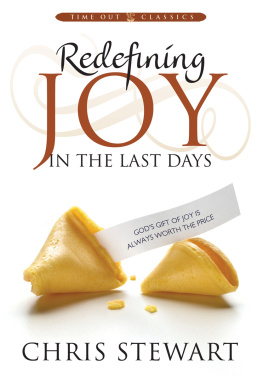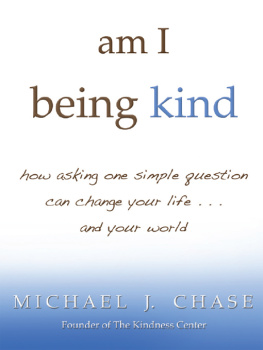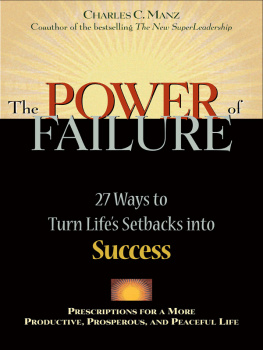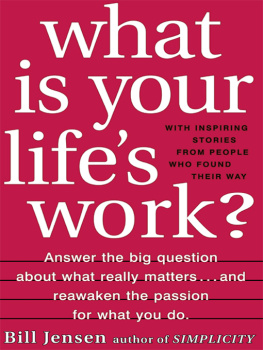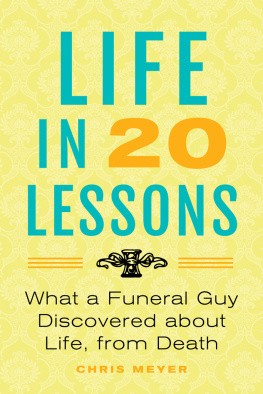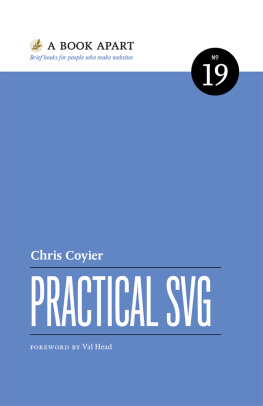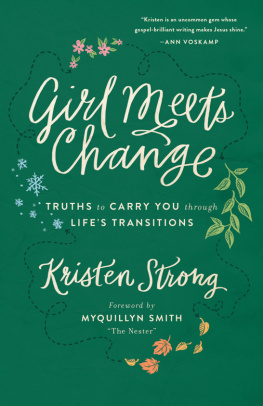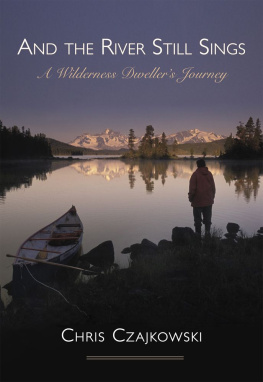Henry lived his life as a young man ... in the present moment and in a world of activity, adventure and fun. Not for Henry the vacuous speculation of an older man. His dad was too full of waffle. He took it upon himself to keep me honest and grounded as I wrote this book. It is such a shame that he didnt live long enough to see the finished product. I would have valued his opinion of it above the opinion of all others.
He was truly wise beyond his years.
Preface
Every so often we come across a simple truth that makes a personal connection for us. It could be a familiar quote or saying. It could be a politicians catch phrase or a family motto. Sometimes it comes naively from the mouth of an innocent child. Or it could be simple advice from a friend. Sometimes its a comedians wicked one-liner.
These simple truths capture complex issues in a single phrase; reflecting the world as we see it. It resonates with us.
When this happens, we experience an aha moment. We have gained insight or perhaps experienced a transformational moment. Suddenly we realise something about life that we probably already knew but hadnt fully acknowledged. This is a personal light bulb moment and we become wiser as a result.
Each of us carries a collection of personal truths about our world, our relationships and ourselves. They help us make sense of the business of being alive. They are often derived from our life experience, but they are also handed down to us by the people that we have known or know. They are subjective beliefs that organise the way that we see the world.
But how often do we take the time to reflect and consider the full depth and breadth of our personal wisdom? We are so busy living life in the moment that we rarely make time to pull up and see the bigger picture. Our accumulated experience inevitably makes us wiser as individuals but, generally, we tend not to appreciate how far we have come.
The Power of the Second Question is about creating the opportunity to pause, to reflect and to consider exactly who we are. To affirm what we value in life and what general principles guide our behaviour. It asks us to consider what lessons we have learned as we have travelled lifes journey, and what our wise legacy should be. This book is about finding ways to see a bigger picture, to help us to discover the meaning and sense of purpose in our lives.
And how can we see the bigger picture? How can we extract a wiser perspective on our world?
By asking good thought-provoking questions of ourselves, we can pause, take a breath and reflect more expansively about life. We also need to set aside time to encourage this habit.
As we grow older we become wiser naturally. This is because we do less and we think more. This cognitive shift towards reflection becomes increasingly relevant and important to us as we age. As a result, we can see patterns repeating themselves. We listen to the stories of others and we react with a more measured, less emotional response. The specific details of a situation become less important. Instead, we become more interested in distilling the essential message from a story and finding a broader coherence. We become detached observers or commentators on the life that goes on around us. Experience also allows us to become more accepting and philosophical about life.
Knowing a little more about life is about learning to know more about ourselves and our core beliefs. This enables us to live a more authentic life, without feeling constricted by the opinions of others. We become our own person and we carry a more defined personal compass that gives direction to our lives. But this is not an automatic process and it is easy to drift rather aimlessly through life. To reset that compass we sometimes need to ask challenging questions of ourselves; questions that elicit a personal wisdom. These questions are known as second questions. In The Power of the Second Question we will learn how to ask them and how to extract greater wisdom from both ourselves and from those around us.
The Power of the Second Question invites you to lift up from the practicalities of everyday life to consider the bigger picture. To think about who you are, what you have learned, and where you are going.
How to use this book
You probably bought this book and intended to keep it clean and pristine. You will try not to mark the pages or bend the spine. Although you will be asked to write in the book and complete exercises you may well hold back, reluctant to spoil the freshness of the book. This is how we usually treat the books we buy.
However, this book isnt like that. Its a book to engage with, to interact with and to scribble in. This is your book, and not one to be lightly shared with others. It is the opportunity for you to reflect upon your life, and to pull together key insights about who you are, what you stand for, and what you value in this wonderful business of being alive.
This is a workbook. I encourage you to scrawl in it, to jot down insights and thoughtful ideas in the margins. Feel free to dog-ear special pages. To jump around in it and come back to different sections time and time again. Think about the questions that appeal to you or challenge you, making time to reflect on them. The more you batter this book, the richer you will become.
I once counselled a client who worked in a book bindery. As a farewell gift, she gave me a beautifully bound leather book with my name etched in gold lettering down the spine. It was a fantastic gift which I treasured. I initially planned to use my beautifully bound book to write a factual history of my life, one page per year, but the task seemed to be too overwhelmingly complex to know quite where to begin. Somehow the project lacked passion, and it didnt seem to capture the essence of who I was. It may have told others what Id done in my life, but it wouldnt tell them what Id learned. Or what I valued. Or what life was all about for me.


